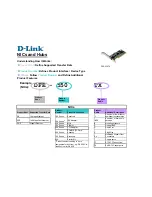
VLAN Interfaces
VLANs are logical interfaces and are, by default, in Layer 2 mode. Physical interfaces and port channels
can be members of VLANs.
For more information about VLANs and Layer 2, refer to
NOTE: To monitor VLAN interfaces, use Management Information Base for Network Management of
TCP/IP-based internets: MIB-II (RFC 1213).
NOTE: You cannot simultaneously use egress rate shaping and ingress rate policing on the same
VLAN.
Dell Networking OS supports Inter-VLAN routing (Layer 3 routing in VLANs). You can add IP addresses to
VLANs and use them in routing protocols in the same manner that physical interfaces are used. For more
information about configuring different routing protocols, refer to the chapters on the specific protocol.
A consideration for including VLANs in routing protocols is that you must configure the
no shutdown
command. (For routing traffic to flow, you must enable the VLAN.)
NOTE: You cannot assign an IP address to the default VLAN, which is VLAN 1 (by default). To assign
another VLAN ID to the default VLAN, use the
default vlan-id vlan-id
command.
To assign an IP address to an interface, use the following command.
• Configure an IP address and mask on the interface.
INTERFACE mode
ip address
ip-address mask
[secondary]
–
ip-address mask
: enter an address in dotted-decimal format (A.B.C.D). The mask must be in
slash format (/24).
–
secondary
: the IP address is the interface’s backup IP address. You can configure up to eight
secondary IP addresses.
Example of a Configuration for a VLAN Participating in an OSPF Process
interface Vlan 10
ip address 1.1.1.2/24
tagged TenGigabitEthernet 2/2-13
tagged TenGigabitEthernet 5/1
ip ospf authentication-key force10
ip ospf cost 1
ip ospf dead-interval 60
ip ospf hello-interval 15
no shutdown
!
Loopback Interfaces
A Loopback interface is a virtual interface in which the software emulates an interface. Packets routed to
it are processed locally.
Because this interface is not a physical interface, you can configure routing protocols on this interface to
provide protocol stability. You can place Loopback interfaces in default Layer 3 mode.
440
Interfaces
Summary of Contents for S4820T
Page 1: ...Dell Configuration Guide for the S4820T System 9 8 0 0 ...
Page 282: ...Dell 282 Control Plane Policing CoPP ...
Page 622: ...Figure 81 Configuring Interfaces for MSDP 622 Multicast Source Discovery Protocol MSDP ...
Page 623: ...Figure 82 Configuring OSPF and BGP for MSDP Multicast Source Discovery Protocol MSDP 623 ...
Page 629: ...Figure 86 MSDP Default Peer Scenario 2 Multicast Source Discovery Protocol MSDP 629 ...
Page 630: ...Figure 87 MSDP Default Peer Scenario 3 630 Multicast Source Discovery Protocol MSDP ...
Page 751: ...10 11 5 2 00 00 05 00 02 04 Member Ports Te 1 2 1 PIM Source Specific Mode PIM SSM 751 ...
Page 905: ...Figure 112 Single and Double Tag First byte TPID Match Service Provider Bridging 905 ...
Page 979: ...6 Member not present 7 Member not present Stacking 979 ...
Page 981: ...storm control Storm Control 981 ...
Page 1103: ...Figure 134 Setup OSPF and Static Routes Virtual Routing and Forwarding VRF 1103 ...
















































